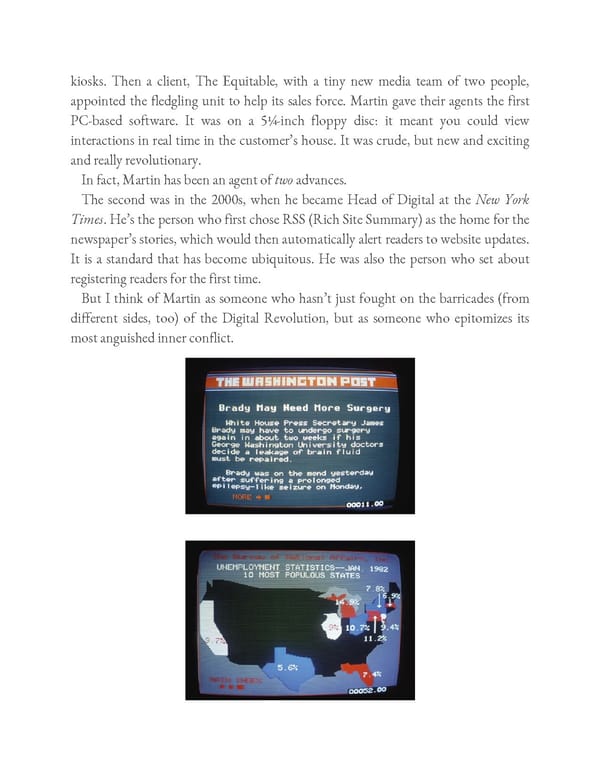kiosks. Then a client, The Equitable, with a tiny new media team of two people, appointed the fledgling unit to help its sales force. Martin gave their agents the first PC-based software. It was on a 5¼-inch floppy disc: it meant you could view interactions in real time in the customer’s house. It was crude, but new and exciting and really revolutionary. In fact, Martin has been an agent of two advances. The second was in the 2000s, when he became Head of Digital at the New York Times. He’s the person who first chose RSS (Rich Site Summary) as the home for the newspaper’s stories, which would then automatically alert readers to website updates. It is a standard that has become ubiquitous. He was also the person who set about registering readers for the first time. But I think of Martin as someone who hasn’t just fought on the barricades (from different sides, too) of the Digital Revolution, but as someone who epitomizes its most anguished inner conflict.
 Ogilvy on Advertising in the Digital Age Page 375 Page 377
Ogilvy on Advertising in the Digital Age Page 375 Page 377